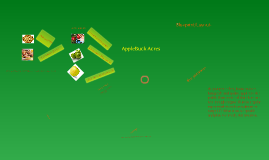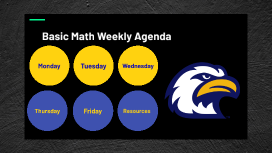BUSINESS AGENDA
Transcript: CALLING A MEETING COMMENTS AND FEEDBACKS Following the agenda REGAINING FOCUS Closing the agenda SMALL TALK A reminder can also come in the form of an e-mail or notice. Verbal announcements or reminders should always be backed up by documented ones. The date, location, time, length, and purpose of the meeting should be included. Step 1 ALLOCATING ROLES VOTING Once everyone has arrived, the chairperson, or whoever is in charge of the meeting should formally welcome everyone to the meeting and thank the attendees for coming. REMINDERS The person in charge of calling and holding a meeting may decide to allocate certain roles to other staff members. THANK YOU'S AND CONGRATS 6 Australian Tours: Pierre (if time allows 10 minutes) 7 Feedback from last year: Everyone (15 minutes) 8 Vote on staff picnic: Everyone (15 minutes) 9 Questions/Closing remarks/Reminders: Everyone (5 minutes) http://www.englishclub.com/business-english/meetings-vocabulary.htm WRAPPING UP BUSINESS AGENDA During the meeting, participants will comment, provide feedback, or ask questions. One of the most difficult things about holding an effective meeting is staying within the time limits. Attendees should be able to follow the agenda as the meeting progresses. Before beginning the first main item on the agenda, the speaker should provide a brief verbal outline the objectives. FOLLOW UP There is almost always one last thing to say, even after the closing remarks. A chairperson might close the meeting and then make a last-minute reminder. Step 5 WATCHING THE TIME Step 3 OBJECTIVES WELCOME Vocabulary Opening a meeting. This should be done either in person, or in an e-mail. WRITING AN AGENDA If an important figure is absent, it may be necessary for the chairperson to apologize for his or her absence and offer a brief explanation for it. By e-mail. Posted on bulletin boards. At the end of another meeting To issue a reminder If the meeting is a small group, it is probably unecessary to take attendance out loud. The person who is taking the minutes will know everyone personally and can indicate who is present and who is absent. In a larger meeting, it may be necessary to send around an attendance sheet or call out names. TAKING THE MINUTE Preparation When issues cannot be resolved or decisions cannot be easily made, they are often put to a vote. Most votes occur during meetings. The end of the meeting is also the time to thank anyone who has not been thanked at the beginning of the meeting, or anyone who deserves a second thank you. There are different reasons why a meeting comes to an end. Time may run out, or all of the items in the agenda may be checked off. Someone may be called upon to take the minutes, someone may be asked to do roll call, and someone may be asked to speak on a certain subject. In the closing remarks, the chairperson, or participants may want to discuss the date and time for the next meeting, when the minutes will be available, or when a decision should be made by. It is easy to get off topic when you get a number of people in the same room. It is the chairperson's responsiblity to keep the discussion focused. Step 2 ROLL CALL/APOLOGIES http://www.englishclub.com/business-english/meetings-vocabulary.htm Sample Agenda: 1 Welcome, Introduction: Pierre and Stella (5 minutes) 2 Minutes from previous meeting: Jane (10 minutes) 3 Japan Tours: Pierre (15 minutes) 4 N.A. Tours: Pierre (15 minutes) 5 Korean Tours: Pierre (15 minutes) 6 Australian Tours: Pierre (if time allows 10 minutes) Step 4 Anyone, including you, may be assigned to take the minutes at a meeting. Often someone who is not participating in the meeting will be called upon to be the minute-taker. Whether you are holding the meeting or attending the meeting it is polite to make small talk while you wait for the meeting to start.

















